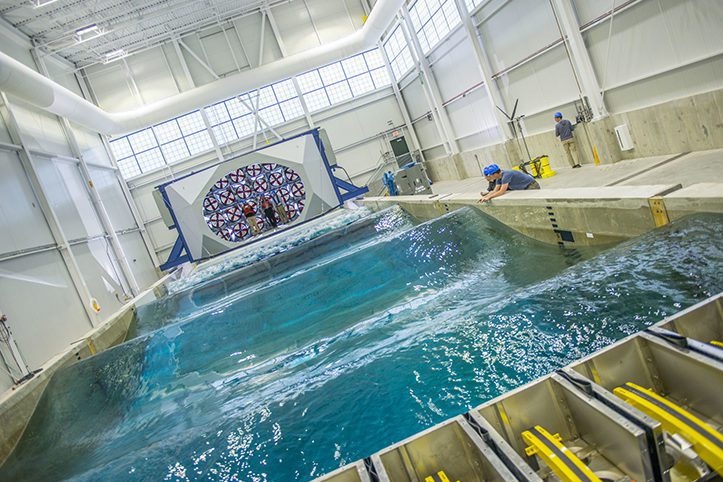A protracted fight over the New England Clean Energy Connect plan to wheel 1,200 megawatts of hydropower from Quebec, through Maine and on to Massachusetts has dominated the airwaves for the last two years. But as the corridor – which will help the Bay State meet its clean energy goals – nears construction, Maine is facing pressure to build up in-state generation capacity in order to secure its own renewable future.
Ambitious goals set by the Legislature in 2019 require Maine to “decarbonize” its production and consumption of energy over three decades – not only by converting the existing fossil fuel generation that’s driving global warming to renewable sources, but by “electrifying” other greenhouse gas-producing sectors, chiefly transportation and heating.
A glimpse of the scale is caught by former State Planning Director Richard Silkman’s latest book, “A New Energy Policy Direction for Maine: A Pathway to a Zero-Carbon Economy by 2050.” Silkman estimates that to achieve complete decarbonization, Maine would have to expand renewable generation by 15,000 megawatts, and increase transmission up to five times present capacity.
It won’t be easy.
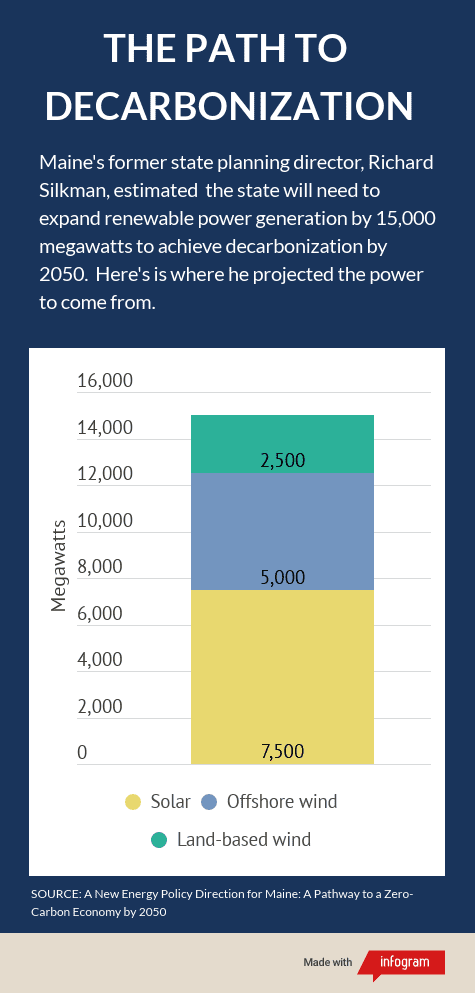
Those are huge numbers – though only estimates, as Silkman acknowledges. The state’s largest single non-greenhouse gas-emitting source was the Maine Yankee nuclear plant in Wiscasset, closed in 1996, which produced 865 megawatts. The largest current power plant is Wyman Station in Yarmouth, at 827 megawatts – but it burns fuel oil and is run only to provide peaking power in winter.
Maine does produce a substantial portion of electricity from many hydroelectric plants, about 31 percent of the total. But, there’s little room for growth, because no one has proposed any new dams for decades. A retrofitting of six dams – and removal of two others – did increase capacity on the Penobscot River, but there are few similar opportunities elsewhere in the state.
Building a renewable future will require investments and construction projects on a scale not seen since the Interstate Highway System – and this one could be larger. It’s a daunting prospect, but one that’s nonetheless urgent.
The specter of global warming and the sweeping effects on climate loom large. As Vermont-based author and journalist Bill McKibben noted in a recent survey in The New Yorker, the 130-degree temperature recorded this summer in Death Valley, Calif., was likely the globe’s highest in 100 years. Perhaps more to the point for New Englanders, McKibben estimates that warming is effectively moving our median high temperature north by 12.5 miles a year.
RELATED: The drive toward vehicle electrification in Maine
While legislators, developers and officials from the governor’s office, utilities and environmental groups have varying perspectives on the methods and safeguards to be employed, they agree that Maine will need an enormous amount of new power generation if climate goals for the next 30 years are to be met.
They also emphasize that Maine needs a regional, not just a state perspective. Most electricity is bought and sold through the ISO New England system, and the prospect for Maine going it alone is essentially nil.
There’s another reason for regional cooperation. As Mark Dion, a former legislator who co-chaired the Energy and Utilities Committee (EUT), pointed out, Maine has half the land area of New England, but only 13 percent of its population, the bulk of which is in Massachusetts and Connecticut. Yet its vast size, compared with its neighbors, means that it offers attractive sites for renewable energy generation, not just solar and offshore wind – the current headline-grabbers – but land-based wind.
“Do we want to be part of a regional solution?” Dion, a Democrat, asked. “We have a lot to gain, economically, when it comes to exporting renewable power to the New England grid.”
Sean Mahoney, an attorney for the Conservation Law Foundation, said that potential has been obscured by the intensity of the battle over the Hydro-Quebec line. He wishes that, rather than choosing a sole-source contract, as Massachusetts did, it had included solar and wind power from the western Maine region through which the new line will pass. Pitting one state, or one province, against each other, won’t produce the best outcome, he said.
Dion said he is not sure setting Maine-specific targets makes sense when the state is part of a regional grid. Still, Mahoney said the role of states is essential: “Only the states have regulatory powers, exercised through the public utilities commissions.”
‘If you require it, they will build it’
Maine’s ambitious land-based wind program that began in 2007, during the Baldacci administration, had a goal of 3,000 megawatts, but to date has produced just 900. The new targets – 80 percent renewable energy by 2030, double the current proportion, and 100 percent by 2050 – have the force of law, with the PUC charged with implementing them.
Mark Lawrence (D-Eliot), current Senate chair of the EUT Committee, analogized the familiar saying: “It’s not ‘if you build it, they will come.’ It’s more like ‘If you require it, they will build it.’”

Already, some of the major solar and wind developers want a piece of the Maine market. Next Era Energy, which is developing projects here already, was a competitor to Hydro-Quebec for the Massachusetts renewables contract – and filed an unsuccessful lawsuit that would have reversed Maine PUC approval, at the same time petitioners were seeking the same object through a referendum. Maine’s Supreme Judicial Court ordered the question be removed from the ballot in August.
Though Maine acquired a reputation during the LePage administration as being hostile to renewable energy – as Gov. Paul LePage repeatedly vetoed versions of the legislation finally passed in 2019 – the state does have some impressive credentials. It’s a charter participant in RGGI – the Regional Greenhouse Gas Initiative – a carbon-reduction system joined by 11 eastern states and it has directed revenues produced by selling carbon “credits” for industrial and commercial expansion to efficiency efforts.
The program employing the revenues, the Efficiency Maine Trust, began operations in 2010.
The independent trust, led by Executive Director Michael Stoddard, offers subsidies to boost acceptance of heat pumps – air exchangers used for hot water and space heating and cooling – in homes and offices around Maine. The popular program has seen 50,000 heat pumps installed, well on the way to its 2025 goal of 100,000. Even LePage liked heat pumps.
Efficiency is often the preferred option – a kilowatt saved is one that doesn’t have to be generated – but few would question the need for new construction. As to what will be built, the best prospects are solar and wind, and lots of it.
Expanding solar
The 2019 solar bill is already proving its worth. With a mix of small and large projects – the former encouraged by “net metering,” where consumers can sell surplus power to utilities – at least 500 megawatts will be installed, representing, according to David Flanagan, president of Central Maine Power Co., one third of demand on sunny winter days, when the peak need is greatest.
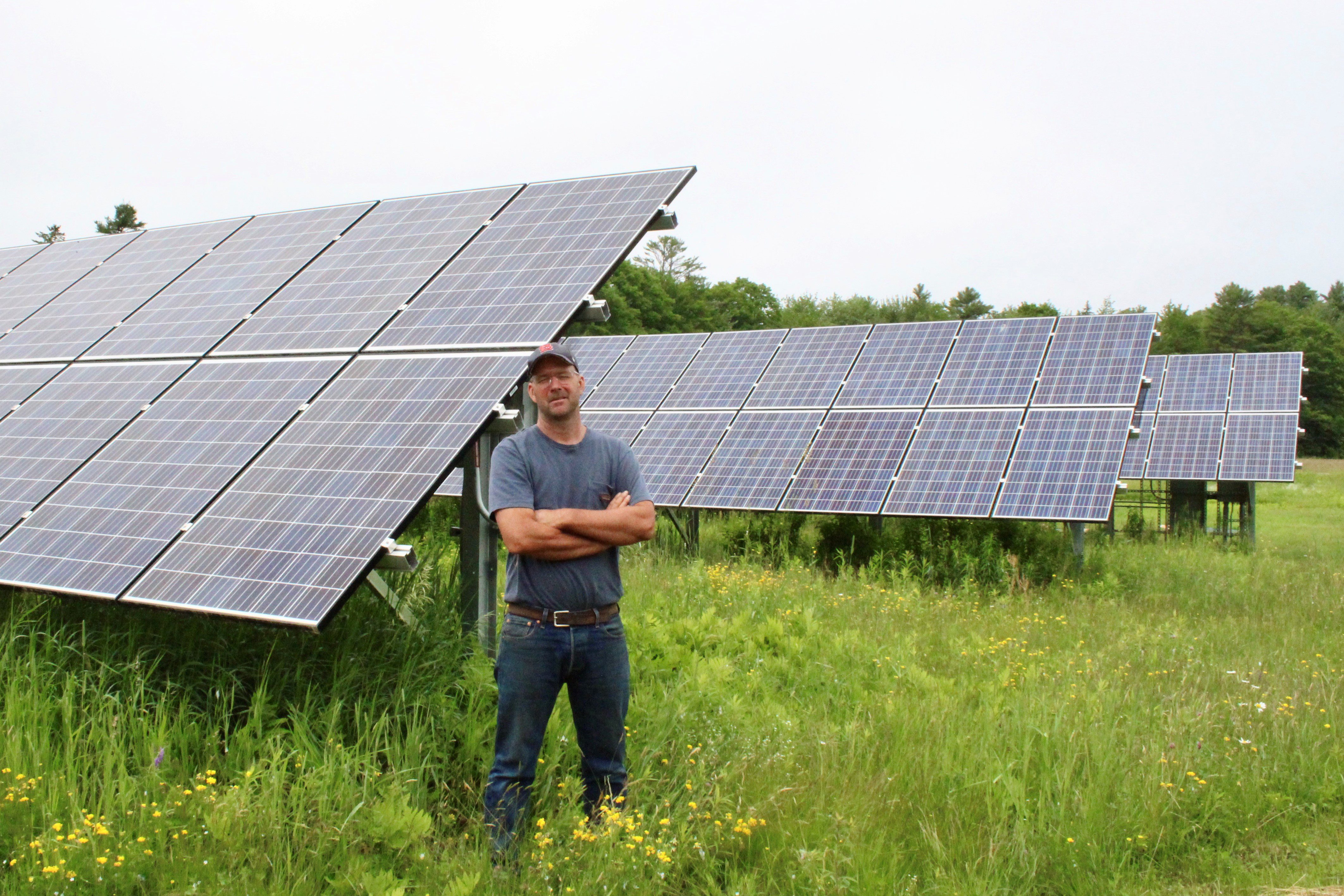
Solar is where “distributed energy” – power produced on a local scale – is playing a role; home wind turbines have not yet proven competitive. Advocates sometimes imagine that rooftop solar, or community arrays, could operate “off the grid,” eliminating the need for new transmission lines that, as with Hydro-Quebec, have often encountered resistance.
This appears unlikely. “I have rooftop solar myself,” said Mahoney of the Conservation Law Foundation, “and we love it. But it’s not going to meet the need for new sources.”

While solar is proving popular with consumers, who, with tax credits and net metering, can see full paybacks in five to 10 years, it’s not without environmental consequences.
Eliza Donoghue, policy and advocacy director for Maine Audubon said that, in siting solar and wind, it all comes down to the real estate mantra of “location, location, location.” She said, “Solar projects that are grid-scale are going to occupy hundreds of acres. In the most forested state in the nation, that’s going to mean cutting down trees.”
Wildlife needs can usually be addressed. “We know where the problems will be,” she said. While Donoghue is pleased developers now ask Audubon to comment on projects, the requests often come too late, when the plans are nearly complete. “If it happened earlier, we could be more helpful.”
Roads to a project, and the transmission lines that leave them, are equally important.
“There is enough room,” Donoghue said, to have both wildlife and renewable generation.
Vast potential of offshore wind
Offshore wind, as represented by the Aqua Ventus project launched by the University of Maine’s Advanced Structures and Composites Center with $50 million in federal research grants, looms as the Taj Mahal, or perhaps the Mount Katahdin of renewable energy in Maine. Now entering the development stage with two heavyweight commercial partners, Diamond Offshore Wind and RWE Renewables, a single 10 megawatt wind tower will be launched by 2023 two miles from Monhegan Island and 14 miles offshore.
The potential is vast. The Maine Climate Council’s draft report pegs the Gulf of Maine’s commercial possibilities at 5,000 megawatts. Jake Ward, UMaine’s vice president of innovation, says that’s possible, and others agree.
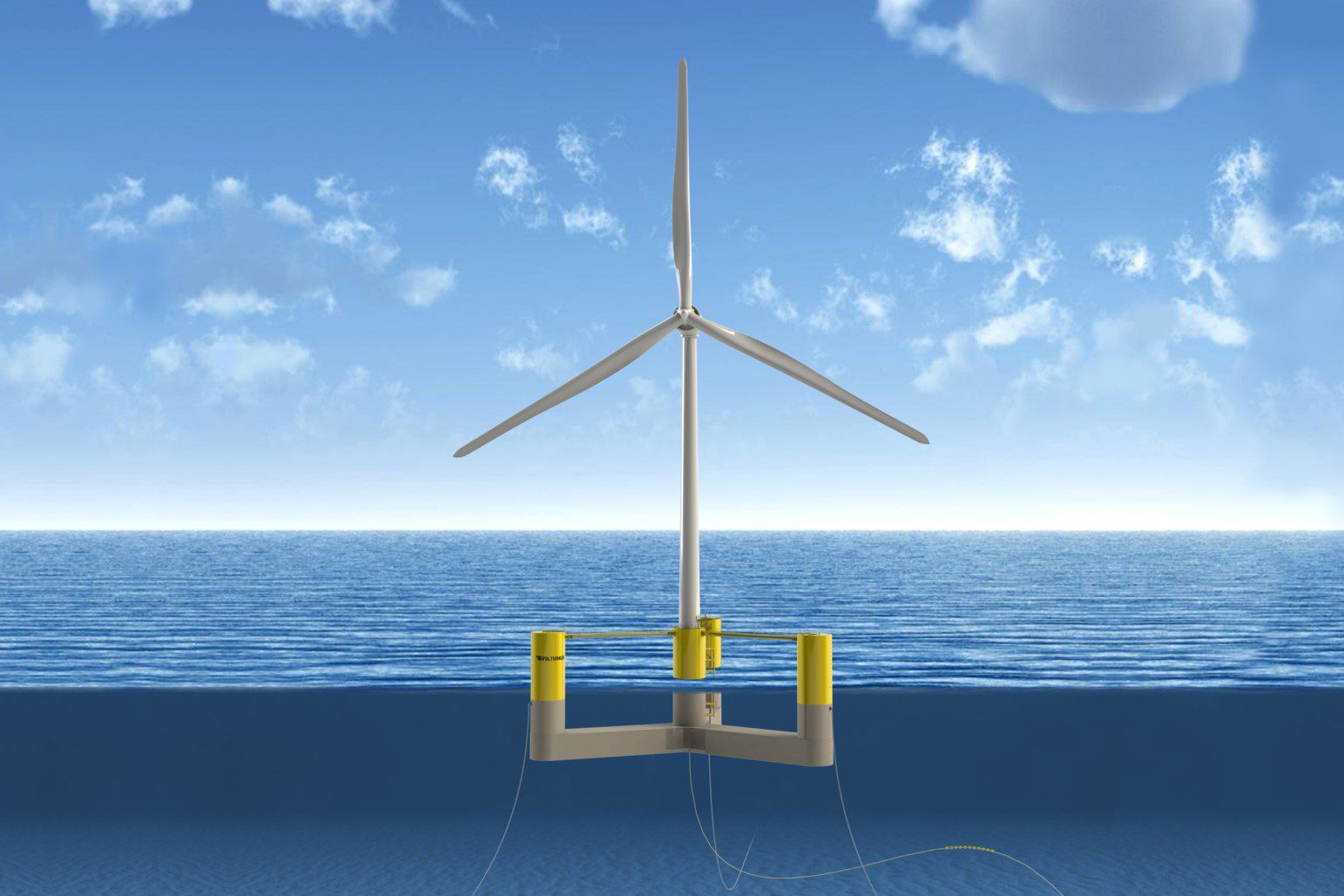
Many issues remain unresolved, including where the power will come ashore. “Let’s just say it won’t be in Iowa,” Ward deadpanned. “That’s too far away.” Wiscasset, where Maine Yankee’s transmission corridors remain intact, is a possible site.
While the prospect of floating towers secured to reinforced concrete hulls is not without controversy, Ward says there are advantages over land-based wind: “If one site isn’t ideal, you can just move the tower. We’re confident we can reduce conflicts with other users and find the right places.”
Rapidly decreasing costs are also making wind power more attractive. “This is a path not just toward renewable energy, but to replace aging coal, oil-fired and nuclear plants,” Ward said. “That’s a big change in the last five years.”
Fixed-based offshore towers, such as the large-scale Vineyard Wind project now under review by Massachusetts regulators, may have short-term cost advantages, but the technology is changing so rapidly Ward says the gap may shrink as production ramps up.
“Fixed-based was never a possibility for Maine. Our waters are just too deep.” But the steady winds available offshore, and the longer seasons for peak winds, could be just the ticket when a second wave of projects comes online after 2030, he said.
Land-based wind en route to overcoming past setbacks
While they’ve faded from the headlines, land-based wind turbines may be in Maine’s future, though the industry may require a restart. Of the 15,000 megawatts of generation Silkman, the former state planning director, envisions, he pencils in 7,500 from solar, 5,000 from offshore wind – and 2,500 for land-based wind, which could be built sooner than offshore.
A new generation of land-based wind turbines is quite different from the machines scattered on ridge tops around the state. Although permitted projects came online during the LePage years, many were scrubbed, thanks to administration opposition, stop-and-start federal tax credits and the Great Recession. Increased opposition prompted the rejection of several projects, with the “visual impact” on mountaintops a key factor.
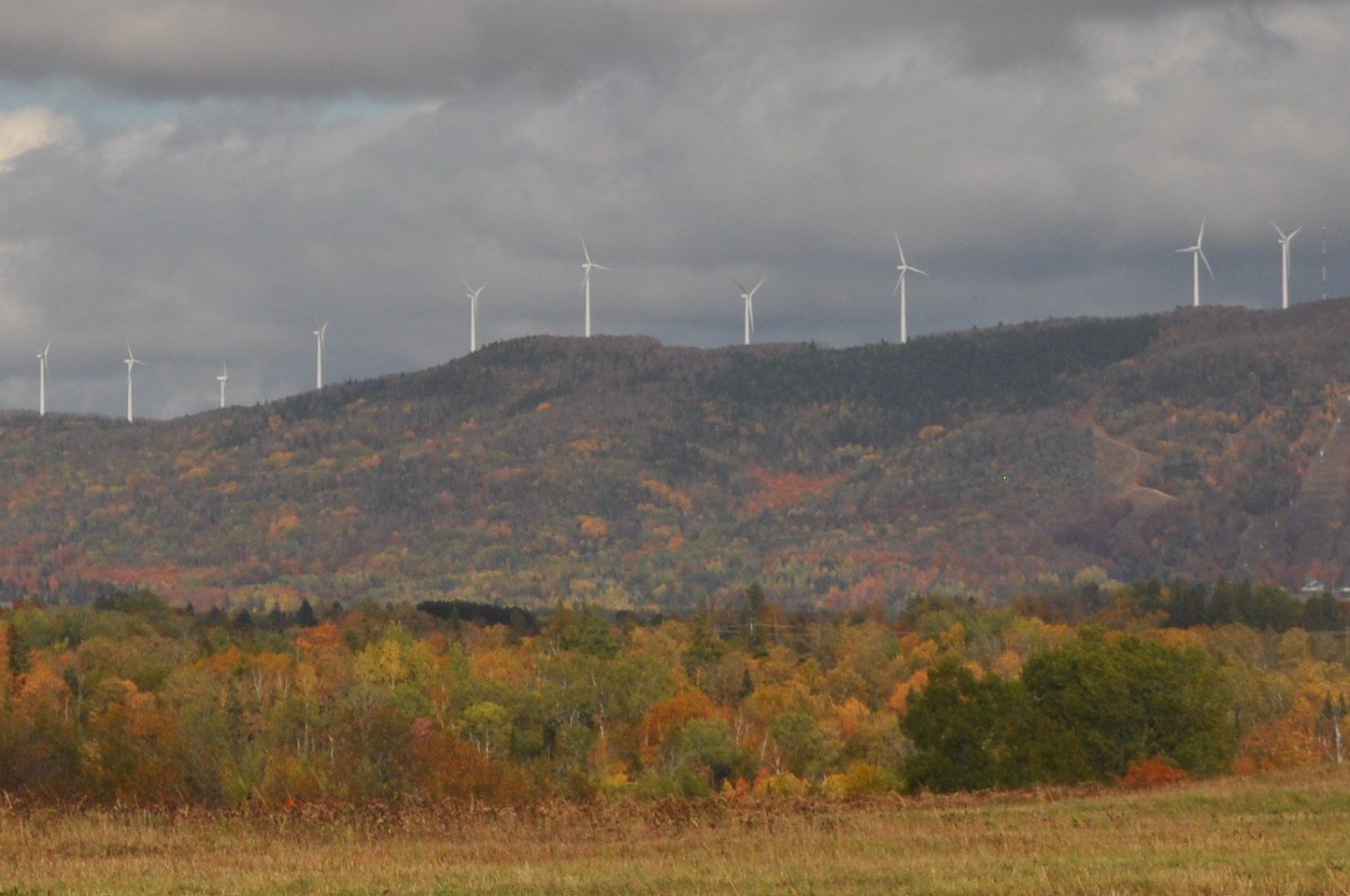
The new machines may be less objectionable. With much larger towers – up to 500 feet – and slower-moving blades, these turbines can be installed on farmland and other relatively level sites. The visual impacts are less, and siting is more likely in organized townships, which often welcome projects because of substantial municipal tax benefits.
Tony Buxton, an attorney with Preti Flaherty who’s represented the Industrial Energy Consumer Group for decades, is an unabashed advocate for land-based wind, which he sees as the most affordable technology– along with solar and heat pumps – for immediate adoption in Maine.

He sees the electric rates as one of the great barriers to rapid conversion to renewables, and says the PUC must get “the biggest bang for the buck” from projects it approves. He noted that, in recent proceedings, large-scale solar bids came in below projected costs, while those submitted under a 5-megawatt cap were rejected as too high.
Rapid development of renewable energy is imperative, Buxton said: “The biggest victims of climate change will be the same as those suffering most from coronavirus – the poor, the landless, people of color.” He acknowledged frustration over continued federal fossil fuel subsidies, but said, “The biggest problem is not the Koch brothers. It’s those who care deeply, but simply don’t know enough about the subject.”
David Costello, an energy advisor to Maryland Gov. Martin O’Malley and now energy director for the Natural Resources Council of Maine, agrees. Discussing small-scale solar, he said homeowners will benefit from net metering, but “the biggest benefit will come from lower rates.”
Obstacles to expanding generation
While the heady talk about renewables can sound exciting, there are still serious obstacles. After the fiery debate over the Hydro-Quebec line, Mahoney is among those concerned that all transmission lines will be viewed as environmentally destructive.
Clearly, power generated from remote solar and wind projects to reach the grid means more power lines – if not the five-fold increase Silkman envisions, then double or triple present capacity. That also means more substations and grid connections, on a scale several times CMP’s $1 billion “reliability” project of a decade ago.
At CMP, Flanagan is less concerned about public reaction to new lines, and said Aroostook County could be a test case, where wide-open spaces are attractive to wind and solar developers. There’s another reason for local support: connection to the rest of the state. Aroostook and part of Penobscot county now get their electricity only through New Brunswick. “They’ve been good neighbors,” Flanagan said of the Canadian connection, “but Mainers do value their links south.”

Another issue is balancing generating loads. As critics point out, solar produces best when the sun is shining, and turbines while the wind is blowing. Capacity factors rarely exceed 40 percent, though it could be higher in the Gulf of Maine.
Load balance could be provided by a familiar renewable source, though not one favored by environmentalists – “ponded hydro” from dam impoundments. A prominent claim by Hydro-Quebec line opponents was that the provincial-owned utility would play a “shell game” by switching fuel sources elsewhere, a claim neither Flanagan nor Mahoney finds credible.
At least 95 percent of Hydro-Quebec’s capacity comes from dams, and the existing contracts cited – with Ontario and New York – also require hydroelectricity. Instead, though documentation is scarce, Hydro-Quebec will bring one more power plant online and retrofit others. And, as Flanagan puts it, “Hydro-Quebec is spilling a lot of water. They have the capacity for export.”
Lawrence thinks Maine might ultimately become a buyer itself of hydropower from Quebec, since the load balancing issue won’t go away, and Maine won’t produce much more hydroelectricity.

Storage would be the major alternative for dark and windless days, but commercial applications are still far off, according to most estimates.
Finally, there’s the “knowledge capacity” of Maine overall. Dan Burgess, appointed Maine’s Energy Office director in 2019, previously held a similar post in Massachusetts, where he supervised 65 staff members. In Maine, he has a handful. In addition to repealing the State Planning Commission, Gov. LePage downsized elsewhere in the Governor’s administration, including the energy office.
Is there enough planning ability and expertise to chart and direct the vast effort required for decarbonization? Burgess hesitates to say what more might be needed.
“I’m impressed by the collaboration between groups here, not just in state government,” he said. In the Legislature, Office of Innovation, and Efficiency Maine “we have a great team, along with ambitious goals and plans.” Lawmakers funded a comprehensive study last year that his office is carrying out.
The planning effort will be buttressed by a new federal grant that, with state and local funds, will provide $2.5 million toward a “roadmap” of offshore wind development in Maine.
I think of myself as an optimist, but I’m not blind to the challenges before us.”
— Dan Burgess, director of Maine’s energy office
On the horizon is possible public ownership of transmission infrastructure. A bill from Rep. Seth Berry, the other co-chair, with Lawrence, of the EUT Committee, proposes buying out CMP and Versant Power and replacing them with a public power authority. Lawrence thinks that’s too far, too fast.
“Where this has worked elsewhere, it’s taken place over years, even decades,” he said. Since there’s no prospect of new federal dam building – which created public authorities to operate them, without shareholders or private profits – it’s a tough sell to buy out companies that have been in business for a century, he said.
Rather, having the state purchase new transmission assets as they’re built, then leasing them to private operators could work, Lawrence said.
RELATED: Power Play: Reimagining electric transmission in Maine
At NRCM, David Costello agrees. “The Climate Council here is much more comprehensive, and has a lot more stakeholders than we did in Maryland, which was a problem when there was a change in administrations.” While seemingly unwieldy – the council has 39 members, plus another 200 in advisory subgroups, “They’ve been great in bringing things forward,” points necessary to any state plan.
Gov. Janet Mills, who since announcing support for the Hydro-Quebec line in February 2019 has been largely quiet on the subject of renewable energy, joined four other New England governors on Oct. 14 – all except New Hampshire’s Chris Sununu – in calling on ISO New England to change its rules and procedures to accommodate the transition to zero-carbon electricity.
‘A great deal of opportunity’
If prospects for a “zero carbon” future by 2050 can seem hazy, the process of getting there seems energizing.
“I think of myself as an optimist, but I’m not blind to the challenges before us,” said Burgess. “As someone with two young children, I think a lot about the future I want for the state, and the world. It can be daunting, but there’s also a great deal of opportunity. There are a lot of extreme weather events, but also a lot of good things happening.”
It’s not too big to comprehend conceptually; it has some nice simplicity, but it will be hard to achieve. It needs a lot of strategic planning and commitment.”
— Michael Stoddard, executive director of Efficiency Maine Trust
The possibilities for large-scale economic growth are inviting, along with making a dent in the $5 billion a year Mainers send out-of-state for fossil fuel purchases. At Efficiency Maine, Stoddard says new revenue sources in the Hydro-Quebec agreement, such as charging stations for electric vehicles and low-income energy assistance, are coming at the right time, as other funding sources wind down. His agency had a budget of $25 million a decade ago against $70 million now, but much more will be needed.
Stoddard said of renewable conversion, “It’s not too big to comprehend conceptually; it has some nice simplicity, but it will be hard to achieve. It needs a lot of strategic planning and commitment.”
He sees “several hopeful signs.” Since “we have a couple of decades, it doesn’t all need to happen tomorrow. It would be one thing if we were wringing our hands, not knowing what technologies to use; it’s quite the opposite. Maine is showing we can make these transitions at scale.”


